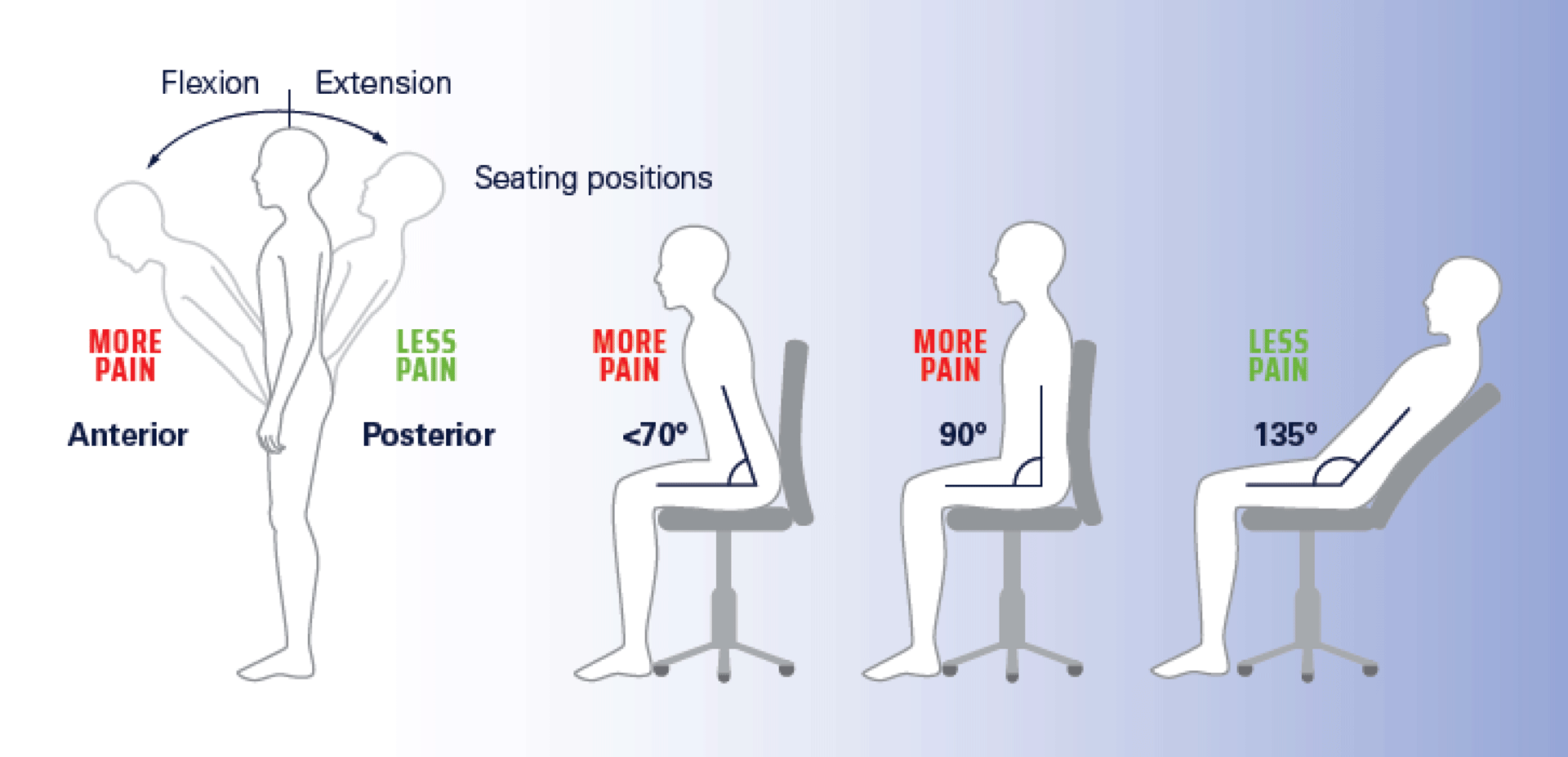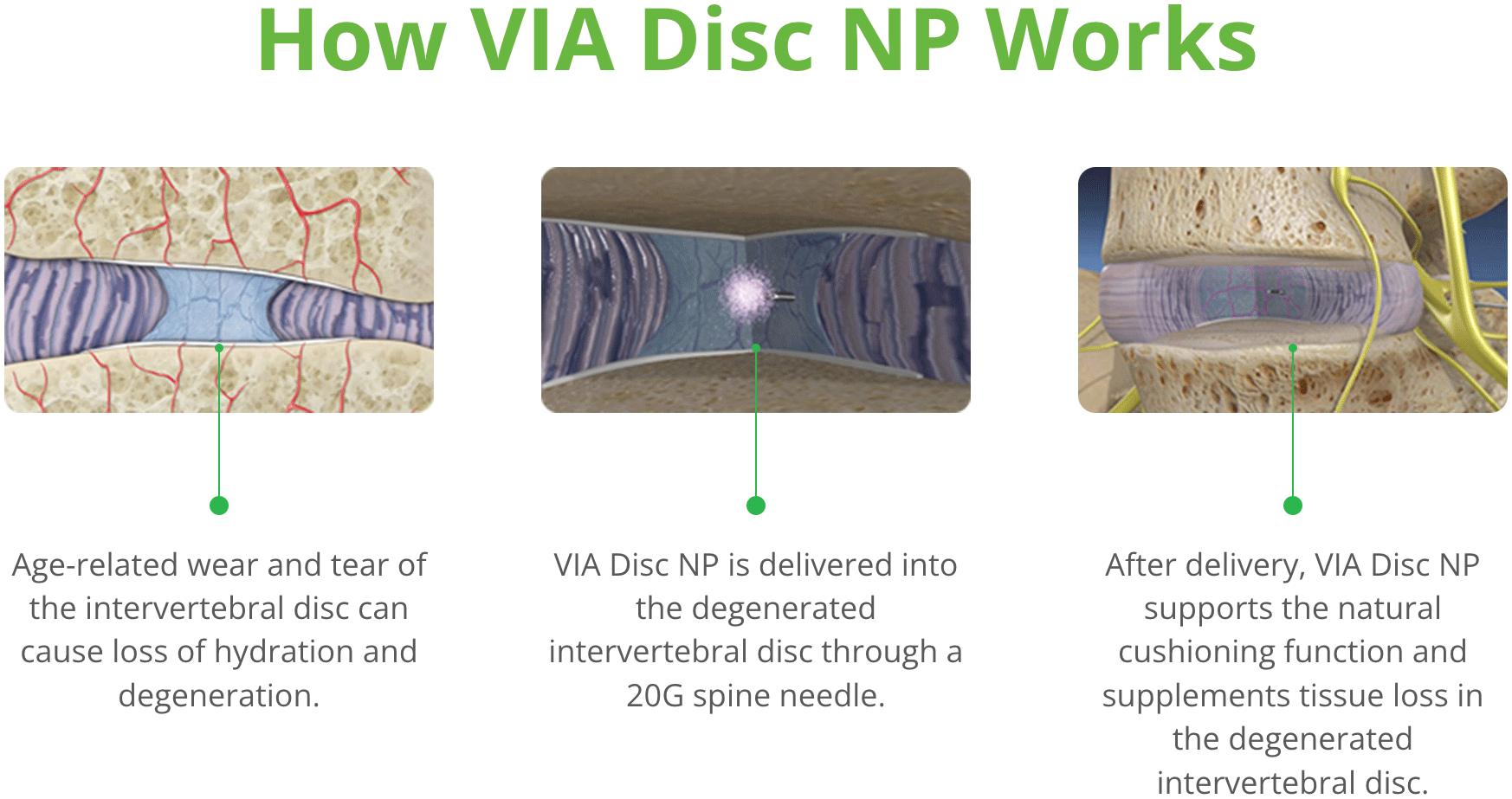
How can intervertebral discs degenerate?
Intervertebral discs can deteriorate through normal aging and injury, causing dehydration, flattening, and loss of natural cushioning. Just like grapes lose water over time and turn into raisins, your intervertebral discs undergo a similar dehydration process. This process leaves your discs vulnerable to motion stress, strains your spinal nerves, and can result in lower back pain.
What is VIA Disc NP?
VIA Disc NP is intended for use as an allograft to supplement degenerated intervertebral discs. An allograft is tissue recovered from a human cadaveric donor that is transferred to a human recipient.
VIA Disc NP consists of dehydrated nucleus pulposus particulate derived from the intervertebral disc region of the donor.
The nucleus pulposus particulate is mixed together with saline and delivered into your intervertebral disc during a non-surgical spinal procedure.
Identifying Painful Discs
Annular strain is increased by flexion, axial rotation & compression.
Pain is exacerbated most in forward-leaning position as the weight creates most pressure on painful disc.

What to Expect with VIA Disc NP?
Pre-Procedure
The nucleus pulposus particulate is mixed together with saline for delivery into your intervertebral disc.
Intravenous antibiotics may be given before the VIA Disc NP Procedure to reduce risk of infection.
Procedure
The VIA Disc NP procedure is performed under strict sterile conditions.
The VIA Disc NP procedure can be performed under local anesthesia or moderate sedation may be recommended by your physician. A procedure involving your pain-generating intervertebral disc can be painful.
During the procedure, your physician will use fluoroscopy (a computer tomography scan that continues to take images during the procedure so that the physician can see where the needle is going).
Your physician will insert a needle through the skin and muscle into the center of the intervertebral disc. VIA Disc NP will slowly be delivered into the center of the intervertebral disc.

Post-Procedure
You may experience pain and soreness after the procedure, which is normal. This pain may be due to increased pressure within your intervertebral disc.
It is important to follow your physician’s instructions after the procedure. You may be instructed to keep your activity to the normal activities of daily life and limit physical or strenuous activity for 72 hours post-procedure.
Your physician may prescribe certain pain medications (e.g. analgesics, steroid dose pack, muscle relaxants). You may experience moderate to severe pain after an injection into an intervertebral disc, and oral medications may be needed promptly to treat this post injection pain and discomfort. An ice pack may be given to place over the injection site in the event of post-injection site discomfort. Your physician may suggest a back brace or recommend physical therapy to make you feel more comfortable following your procedure.
A follow-up appointment will typically be scheduled two to four weeks after the procedure to monitor your pain and comfort. Additional follow-up appointments may be scheduled at the discretion of your physician to assess your condition.
It is important that you consult with your physician for medical advice, including any questions you may have regarding the VIA Disc NP product or the associated procedure.